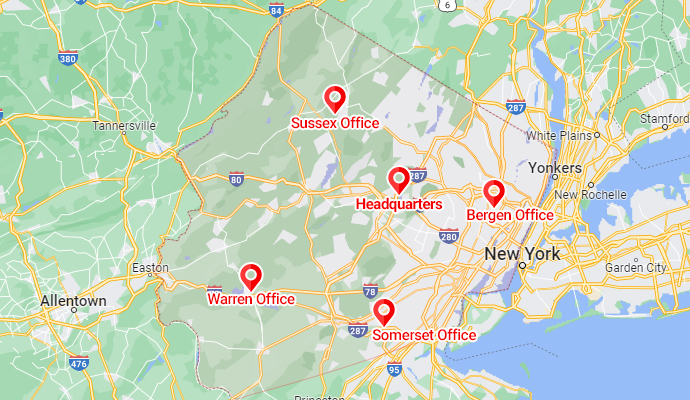Three Things You Need to Know About Preparing Your Home for the Winter
It's that time of year again! Preparing your home for winter is best done before the heavy snowfall, damaging frosts, and below-freezing temperatures make it impossible to protect your property. With just a few, simple tasks, most of you can do yourself, you can rest assured that you are keeping your family safe and your home protected from winter's severe weather.
Prepare Your Home’s Exterior

-
Roof - You should
make every effort to maintain your roof year-round, but it is essential
to get it ready for winter during the fall, as the weather can be
especially damaging to it. Perform an inspection by looking for any
broken or missing shingles, flashing, or any other signs of aging and
deterioration.
If there are any tree branches overhanging the roof, cut these back. Also check in the valleys, chimneys, and vents for any debris or clogs.
Look in your attic to make sure there are no stains that can indicate water leaking. Now is also a good time to make sure the attic is properly ventilated so you can avoid mold or mildew from forming from any standing water. -
Outdoor pipes - Any exterior
pipes you have, and any indoor pipes on an exterior wall, you should
wrap these with insulation to prevent them from freezing. If a pipe
freezes, there is a good chance it will crack, and when winter ice
thaws, it can cause that pipe to burst or start leaking.
You’ll also want to shut off the water supply to any spouts on the exterior of your house. Drain garden hoses, spigots, and any sprinkler lines to prevent water from accumulating and freezing. -
Gutters/downspouts - Clean any fallen leaves, debris,
or small tree branches out of the gutters. Keeping these free of debris
will be one of the best preventative measures you can take to prevent
clogging and allow for proper drainage of melting snow.
Consider adding mesh guards over the gutters to prevent debris from accumulating throughout the year. -
Windows/doors - Cold air can seep in through openings
in windows and doors, as well as any place there is an opening between
interior and exterior walls. Caulking and replacing worn-out weather
stripping will help you to seal cracks around windows and door
jambs.
The fall months are a great time to go ahead and install those storm doors and windows, the kind that keep hot air in and cold air out.
Invest in some door sweeps wherever you can see light coming in underneath a door. Where there’s light, there’s also cold air. - Chimney/fireplace - Have the chimney(s) and fireplace(s) checked on an annual basis. A professional will make sure that the soot buildup is removed, as well as remove any debris and creosote, that result from burning firewood.
- Prepare your home’s interior
- Furnace - During the year, replace your furnace filter every three months. A clogged air filter will make your furnace have to work harder and shorten its lifespan. During the life of a furnace, dust, pollens, particle lint, and other clogging agents will collect in the furnace, so an annual cleaning is also recommended.
- Inspect small areas - Drafts can occur around electrical outlets and switch plates. With proper insulation around these, you can potentially incur a small amount of savings in your energy usage.
- Garage door - Your garage door is another area where your home is less energy-efficient. Check the condition of the weatherstripping and the seal at the bottom of the door to be sure cold air is prevented from entering through the garage.
- Ceiling fans - In the colder, winter months to keep your home cozy and warm, reverse the flow of your ceiling fans. Since hot air rises, by reversing the fans, the warm air will be moved down, which can reduce your heating costs by keeping rooms more comfortable.
Prepare for Emergencies
- Smoke alarms/carbon monoxide detectors - Change the batteries in your smoke alarms and carbon monoxide detectors and test them to be sure they are working properly. If you have an external gas-powered generator, ensure that it is properly vented and is far enough away from your home to prevent carbon monoxide from entering your home.
- Prepare an emergency kit - Put together a kit you can use during power outages. Include flashlights, battery-powered radios, extra batteries, non-perishable food items, and bottled water, as well as enough prescription medicine to last you about a week. Blankets, some cash, an emergency car kit, and an ice scraper can also be handy.
If you experience any winter-related damage to your home this season, remember to call us here at PDQ Restoration, where we treat each loss to home and property as if it happened to our own family. We'll provide you with top-notch restoration work and caring, professional technicians to do the job.

















